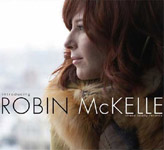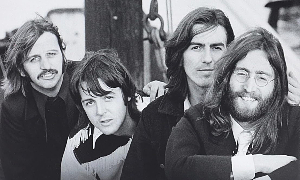Home » Jazz Articles » Book Review » Horizons Touched: The Music Of ECM
Horizons Touched: The Music Of ECM
 Horizons Touched: The Music Of ECM
Horizons Touched: The Music Of ECMEdited by Steve Lake and Paul Griffiths
Granta Books
ISBN 978-1862078802
2007
ECM: three simple letters that convey much. Indeed, so strong is founder and main producer Manfred Eicher's dialectic of sound and image that unified, holistic reactions/representations are spontaneously triggered in connoisseurs' minds. As one, the label's characteristic aural and visual signatures mesh felicitously into what is now universally understood as "the ECM sound." Few labels have achieved such a singular aesthetic identity. Which raises the following questions: what is the ECM sound, if there is one, and what are the technical and philosophical tenets to which Eicher adheres? Two years before its 40th anniversary, and after more than a thousand recording sessions, the Munich-Graefelfing, Germany based label finally offers an inside look at itself.
Sharing editorial duties on Horizons Touched: The Music Of ECM are label employee/writer/producer Steve Lake and Paul Griffiths, a respected writer specialising in modern music. The two have collected a large number of statements from artists and others associated with the label, as well as those of expert essayists brought in to discourse on topics linked to the label's wide-ranging catalogue. Amongst these is AAJ's own specialist John Kelman's chapter, "Present And Future Songs." Expositions on film music, cover art, modernism, early music, folk music, US jazz and Bach, among other subjects, are also included.
A companion to ECM's extensive body of recorded work, the 400-plus pages book (with an appended complete discography) comes in a coffee table-sized slipcase. Also included are two interviews with Eicher—plus his complete honour-acceptance speech to the City Council of Munich—as well as a paper on and an interview with flagship artists pianist Keith Jarrett and saxophonist Jan Garbarek, respectively. In true ECM fashion, the layout is outstanding, enhancing the many album covers and including hitherto unseen photographs.
Having abandoned the bass for producing in the early 1970s, Eicher has successfully incarnated his seemingly Walter Benjamin/Theodor Adorno-inspired yet personal "work-in-progress" vision of a meaningful cultural enterprise, one that remains free from the mercantile pressures of the oftentimes trendy and risk-averse mass media. Closely supervising all steps of an album's production, Eicher the auteur shapes each project as an extension of his focused aesthetic philosophy, while cultivating an unformulaic and exploratory mentality, which he brings out (or instills, as the case may be) in the artists he records. His approach remains rooted in the music—just (the) music—and the performance.
As Eicher's early musical idol, pianist Paul Bley perceptively remarks: .".he plays through other musicians." Of course, such an approach demands shared trust amongst all participants (photographer Jan Jedlicka and pianist/composer Thomas Larcher write illuminatingly about this). Bley later proclaims of Eicher: "I think he is a genius." Slightly less charged words come from guitarist Terje Rypdal, saxophonist Charles Lloyd, Larcher and others, but are no less laudatory. Many relate how Eicher's enthusiasm, concentration, keen ear, ability to instigate collaborations and insistence on unbarred spontaneity, allowed them to "go deeper." Notwithstanding what detractors invoke about ECM's cerebral, bourgeois and elitist releases, they should at least acknowledge the favourable creative conditions, material and/or collaborative, that Eicher facilitates.
It is when reading about the diverse New Series projects that one really grasps the extent of ECM's far-reaching musicological scope. Starting with 1984's Tabula Rasa by Estonian composer Arvo Paert, the label has exposed and supported a select group of lesser-known, post-Soviet era composers. Photographer Gerald Minkoff's comment and the cover of Valentin Silvestrov's Requiem For Larissa are quite revealing, as are Giya Kancheli's speculations about Shostakovitch's musical direction had he evolved under another, non-Stalinist political regime.
Similarly, the idea of restraint, be it ideological or music-related, recurs throughout the book. For example, ECM being a vanguard where the old meets with the new in imaginative and unconventional ways, much is said of the closed yet permeable forms of folk music and the liberty found in children's music (input from Anders Jormin and Gyorgy Kurtag being particularly revealing here). Transcultural exchanges and genre mixing are also not uncommon in Eicher's inner circle. The Hilliard Ensemble with Garbarek and Thomas Demenga's pairing of Bach with modern composers' works are two convincing examples, as are the soundtracks to Jean-Luc Godard's films and the numerous poetry/literature-based outings.
Unfortunately, certain readers will look, to no avail, to find comments from some of their favourite ex-ECM artists (for example, the individual members of Azimuth, bassist Dave Holland or guitarist Pat Metheny.) That said, considering the wait, most will find this book insightful and deserving a prime spot on their art book shelve.
Visit ECM Records on the web.
ECM Records at All About Jazz.
Tags
PREVIOUS / NEXT
Support All About Jazz
 All About Jazz has been a pillar of jazz since 1995, championing it as an art form and, more importantly, supporting the musicians who make it. Our enduring commitment has made "AAJ" one of the most culturally important websites of its kind, read by hundreds of thousands of fans, musicians and industry figures every month.
All About Jazz has been a pillar of jazz since 1995, championing it as an art form and, more importantly, supporting the musicians who make it. Our enduring commitment has made "AAJ" one of the most culturally important websites of its kind, read by hundreds of thousands of fans, musicians and industry figures every month.






























